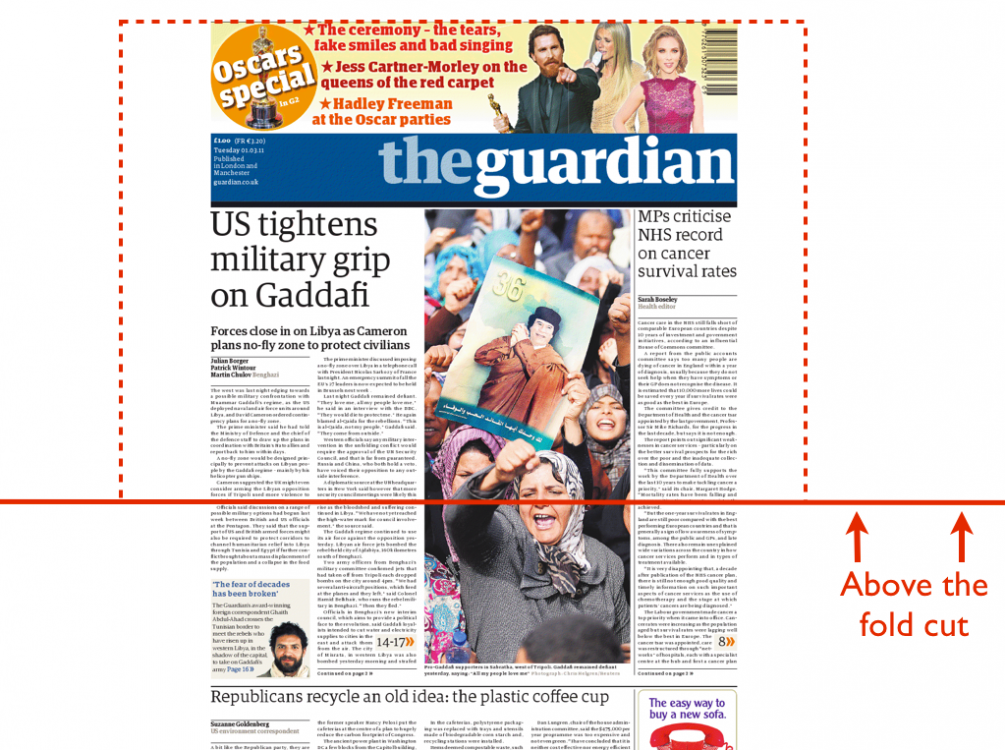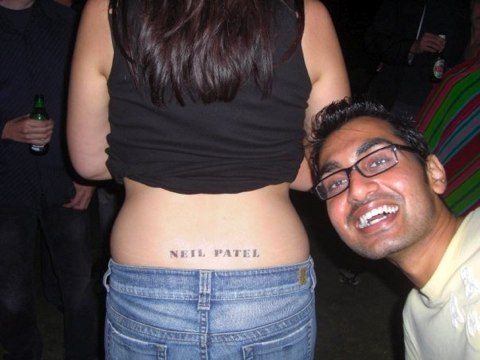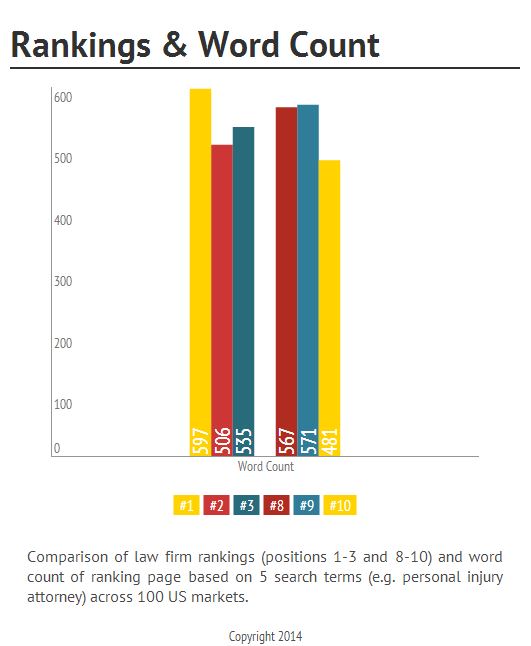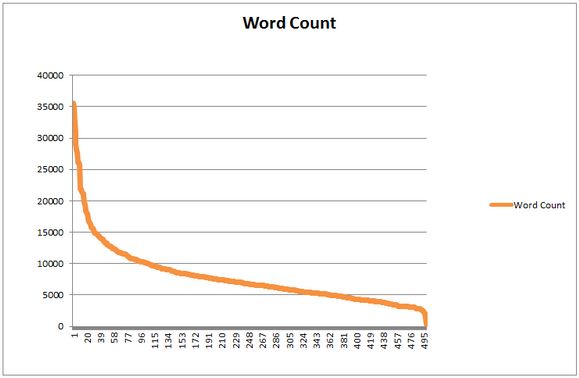While studying journalism as a college student, I remember learning about the coveted “above the fold” section in newspapers on the front page. It was extremely precious real estate and was often the only thing seen in newspaper stands. The concept was loud and clear – it needed to capture the attention of passerby’s. 
Online, however, the page fold seems more ambiguous to me and grows even more so as today’s users scan and scroll through beautifully constructed, seamless web pages. In the mid-90’s, internet users didn’t scroll down web pages like they do today. Best practices back then was to keep everything “above the fold” or within a page’s initially viewable area.
Marketers realized at the turn of the century that users were scrolling more. Users are scrolling more today than ever before. I know internet users have ridiculously short attention spans, but let’s be fair about two things – people still read and words still convert. Expand your copy. Doing this can help virtually every facet of your online strategy.
Conversions
Long form copy that conveys trust and user buy-in will convert more traffic and improve the quality of your leads. It gives substance to those stock images and calls to action. I can’t tell you how many times I have seen the quest for conversions get in the way of storytelling, the brand and the product. The design lacks balance, there’s no flow and, in short, there’s no reason for the user to make contact with the business. Make sure your content is in sync with your design. If it isn’t, then it’s time to reel in the line and re-bait the hook. Here’s a good example of an attorney’s website where content is worked into the design.
So before you experiment with every font, color and call to action imaginable to improve conversions, work your content into your design and make it a little longer.
Ranking
Long form copy equates to long-tail search rankings, which is great, but there may be more. Here at NiftyLaw, we recently examined lawyer rankings across 100 different US markets, and we found one thing in common among lawyer websites who ranked #1 organically for their search terms. They averaged a higher homepage word count than the rest of their competitors. Average word count for #1 position was 597 words compared to an average of 481 words for sites occupying the #10 ranking position.
Jaw-dropping results? No, but they suggest that more copy is better when it comes ranking organically.
Social Shares
A little over a year ago, Neil Patel conducted a study on the effects of his name tattooed across various body parts.

Ok that’s not true at all. The actual study compared content length against social shares. He took 327 blog posts of his own blog posts written on Quick Sprout and divided them into two categories. The first was comprised of blog posts that contained less than 1,500 words – the second greater than 1,500 words. Care to guess which of the two categories garnered more social shares? The second category took the cake with 68.1% more tweets and 22.6% more Facebook likes.
Links
Looooong content gets links, we’re talking novels. I don’t know if these are sympathy shares or what, but if I read a decent blog post that’s 30,000+ words long I’m going to do the author a solid and share the damn thing. In 2011, Dr. Peter Meyers of Moz analyzed 500 blog pages and found a surprising correlation between content length and number of links pointing to that content.
So what’s the takeaway? Here’s what I got out of this. #TLDR is a thing. #longreads is also a thing. And while this study refers specifically to blog posts, the same principle can be applied to promotional pages, practice pages and other linkable assets.
The Quality Clause
Blaise Pascal famously stated, “I would have written a shorter letter, but I did not have the time”. While length plays a role in conversions, ranking, social shares and links, if it’s not good quality it’s stale and will cause your audience to bounce. Content quality always comes first. Think of it this way – when writing blog posts, the length is determined by how well developed and researched the topic is. When writing home page content, consider your personas, their pain points and your personality. In other words, don’t hire a bad writer and ask them to knock out 2,000 words just because it converts better.
In Conclusion
The fold still has a place in online marketing. There’s still a great need to prioritize and place the very most important information where users are most likely to see it. Obviously, users tend to spend more time looking at what is initially viewable than what requires further action to access. But, I see evidence all the time of the page fold principle taking precedence over engaging copy where a dozen page elements are crammed into the top half of a page – making things chaotic and limiting space for good quality copy. Remember, people still read and words still convert.
That said, looking for a bump in conversions and user engagement can be no more difficult than increasing your word count! Give it a try, check results and let us know what happens in the comments below.
Devin is the Director of Product at Nifty. With over a decade at Nifty, and even more years working in the SEO and digital marketing space, Devin has done it all – from execution to high-level strategy. He is a Google Product Expert and speaks French fluently. In his spare time, Devin enjoys fishing, playing pickleball with his wife, and cheering on his kids from the sidelines.



